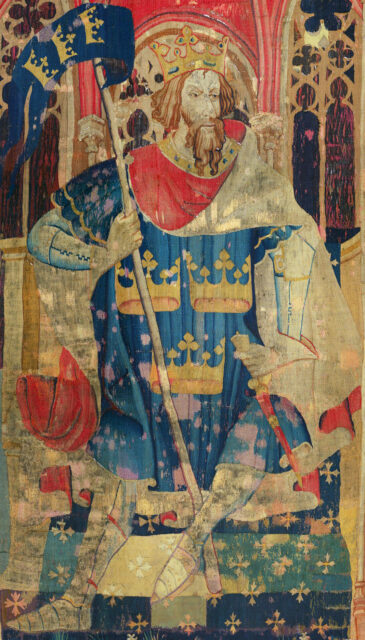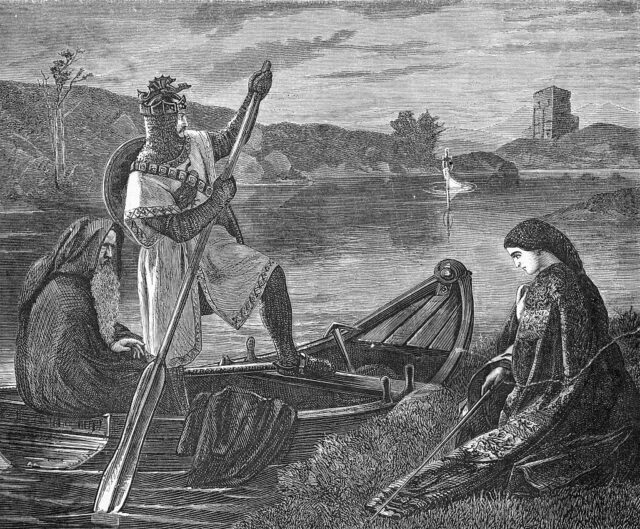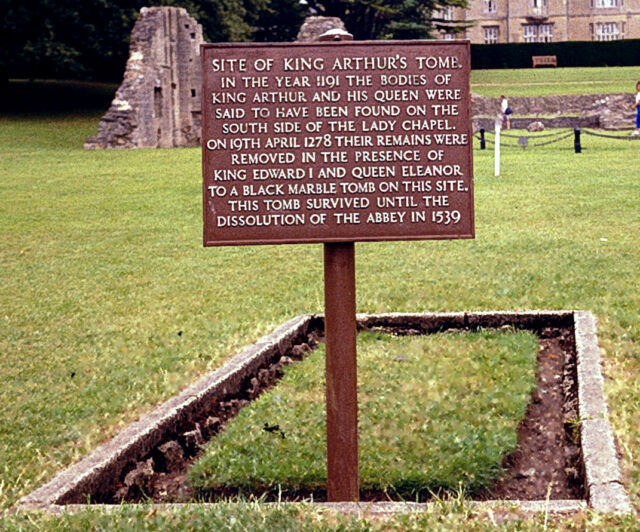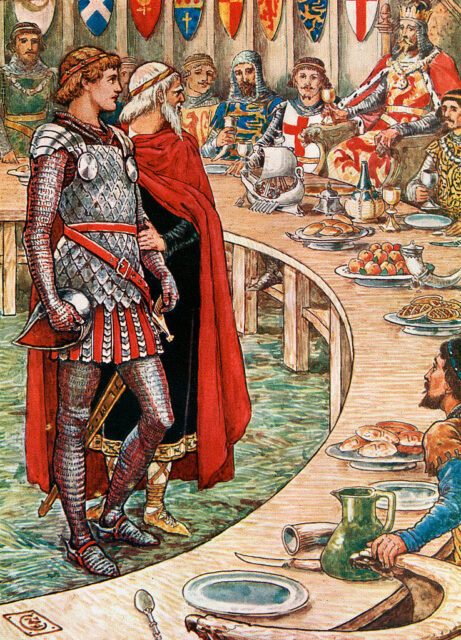The legend of King Arthur is undoubtedly one of the best-known medieval stories, following the fantastical ruler who defends his people from the invading Anglo-Saxons. Full of magic, mystery, romance, and conflict, it has been adapted for over 1,000 years. Despite its popularity, there has been a lot of debate about whether King Arthur is real. Historians have studied the tale and come to a very disappointing consensus.
Creating King Arthur
The original legend of King Arthur sounded nothing like the story we’ve come to know today. Tales of his exploits first appeared in Welsh sources around 828, and again in the 10th century. Neither of these accounts were contemporary. Instead, they talked about his acts in the fifth and sixth centuries as he defended against the Anglo-Saxons. Historia Brittonum, the earlier of the two sources, doesn’t even call Arthur a king as we now know him, but a warrior, soldier, and military leader.

It also includes detailed information on the 12 battles that this man allegedly fought in, although it didn’t give any dates for when they happened. Annales Cambriae, on the other hand, gives dates for the Battle of Badon (516 AD), the Strife of Camlann (573 AD), and the Battle of Armterid (573 AD). It also includes Merlin and Mordred, Arthur’s great nemesis. Compared to later works, these accounts read more like a history textbook than a fantasy novel.
Evolving stories
What might come as a surprise to some King Arthur fans is that many of the iconic parts of the story, like Excalibur and the Round Table, weren’t added until much later. It is Geoffrey of Monmouth who is credited with these alterations, creating the first Arthurian Legend in his History of the Kings of Britain.
As written by Monmouth, Arthur, “[was] a deeply unlikable sociopath, a violent, quick-to-anger, murderous thug.” This worked well for a Dark Ages audience but was less appealing to those in the Middle Ages. To fit this new audience, Sir Thomas Malory created a more noble and kingly legend called Le Morte D’Arthur.

While the full tale is far more complex, the story follows Arthur as he draws the sword in the stone and discovers that he is the rightful British king. When it is broken during a fight, the mystical Merlin leads him to water where the Lady of the Lake presents him with Excalibur. Eventually, he is accepted as king, marrying Guinevere and setting up the Round Table with the greatest knights in the land. Together they undertake many quests, the best known being the search for the Holy Grail.
Is King Arthur real?
Now it all boils down to the question of whether King Arthur is real. According to most academics who studied the original tale, it is a unanimous no. Based on his appearance in historical texts, this man would have lived during the sixth century and yet there is no record of a king with this name having ruled during this period. Although records weren’t perfect in the Dark and Middle Ages, they were generally reliable for important things like monarchs.

Really, what is the chance that a figure this legendary was just forgotten? Only adding to the likelihood that Arthur was fake is that the battles listed in Historia Brittonum happened so many years apart that it would literally be impossible for one man to participate in them all, although if he really did have the wizard Merlin helping him out who knows what’s possible. Aside from textual sources, there is also no conclusive physical evidence to prove he existed.
Holding out hope
While historians have largely reached a consensus, there are still those who wholeheartedly believe King Arthur is based on a real figure. There is some sparse evidence for this, including the fact that the legend remained so popular throughout medieval times. If Arthur was based on another historical figure, and that is a very big if, there are a few people mentioned in the record that he could have been.

The monk and writer Gildas penned a contemporary account of the Battle of Badon that mentions an Arthur-like figure, Ambrosius Aurelianus. Magnus Maximus, a Spanish-Roman soldier, accomplished many things credited to Arthur. Finally, both Caratacus and Cassivellaunus were Britons who were said to resist the Roman invasion, as did the king of legend. While it is improbable that Arthur ever existed, never say never.
Lancelot, Guinevere, Merlin…oh my
Although scholars seem to dismiss the idea that King Arthur is a real person, this isn’t entirely true of his companions. According to historian Nikolai Tolstoy, “Merlin was indeed an historical figure, living in what are now the Lowlands of Scotland at the end of the sixth century A.D. (…) he was an authentic prophet, most likely a druid surviving in a pagan enclave of the North.” He is referring to Myrddin Wyllt, commonly considered to be the real inspiration for the mythical figure.

Guinevere, on the other hand, is almost certainly as fictitious as her mythological husband. Unlike Arthur, however, there isn’t really a historical figure that could have been the inspiration for Guinevere. It is more likely that she was supposed to be an analogy for a Celtic goddess, specifically one tied to fertility based on her many actions throughout the later legends. Others believe that she was meant to represent a Christian goddess of wisdom, Sophia.
More from us: Tragic Royal Heirs Who Died Before They Could Reign
That leaves only Lancelot, the greatest knight in the realm. His status as real falls somewhere between Merlin and Guinevere. Some academics argue that he is a representation of Lugh Lonbemnech, a major Celtic deity. Others, however, think that he could have been based on a real warrior, Lanzelin, who lived between 930 and 991 AD.
